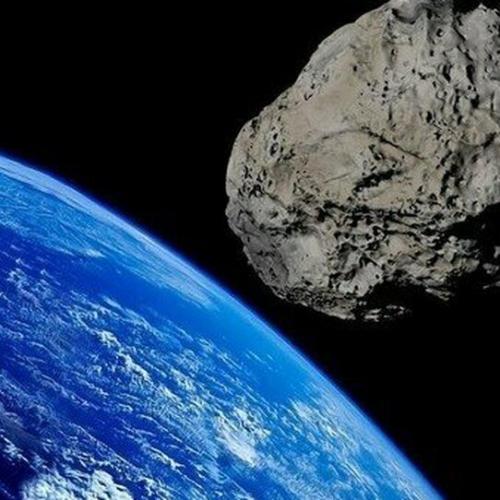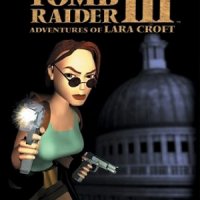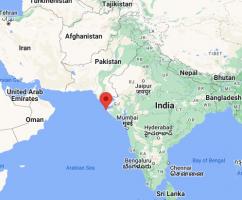Extraterrestrials in protohistoric India?

The "specialists" mocked Heinrich Schliemann, the German trader who less than a century ago claimed to go in search of ancient Troy taking as good the indications of the Iliad and the Odyssey, which according to scholars were a mixture of myths and legends groundless. But it was Schliemann, the "amateur", who discovered Troy.
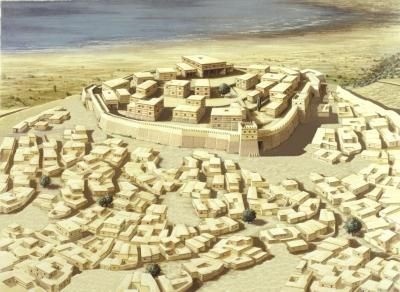
Maybe that's just the right attitude: conducting research having the ancient texts in sight, and making an effort to take them seriously even when what they narrate seems far-fetched. This is what a Sanskrit scholar, David Davenport, a British citizen born in India, and the Italian journalist Ettore Vincenti did in 1978 after reading the Ramayana.
An epic poem and at the same time a Hindu sacred text, one hundred thousand stanzas (it is the most verbose book of poetry in existence), the Ramayana is, like the rest of the other national poem, the Mahabharata, a confused account of wars and battles that took place in an antiquity indefinite and legendary along the Indus valley.
"The most striking thing in reading is that these battles are not fought with spears and swords"
says Ettore Vincenti.
Here is an example: the passage is taken from the Mahabharata:
"The valiant Aswatthaman (a character), steadfast, touched the water and invoked the weapon Agneya (from Agni, "fire"). Aiming it at his enemies visible and out of sight, he fired a column of explosives which opened in all directions and caused a brilliant light like smokeless fire, which was followed by a shower of sparks which completely surrounded the army of the Parthas".
And here are the effects of the weapon:
"The four cardinal points were covered in darkness.. a violent and bad wind began to blow. The sun seemed to turn in the opposite direction, the universe seemed feverish. The elephants, flayed by the heat, they ran around in terror."
Even the water began to
"boil and the aquatic animals showed intense suffering."
A few hundred verses further on, the Mahabharata describes the effects of another weapon, the "Narayana":
"The warriors... were seen to take off their armor and wash it in water."
"These descriptions"
say Davenport and Vincenti
"recall strikingly the effects of atomic explosions and phosphorus bombs."
"Actually"
explains David Davenport
"several weapons are described in the Ramayana which, however fantastic they may seem, closely resemble very modern weapons. The glossary of weapons of the Mahabharata compiled by the illustrious Indian Sanskritist Hari Prasad Shastri speaks for example of the Kamaruchi, "intelligent arrow, which goes where it wants", in which without too much imagination you can see a remote-controlled missile. Or the Murchchdhana, "weapon that causes the temporary suspension of all sensations"; perhaps a nerve gas? And the weapon Couldn't Nadana, "producing joy", be a laughing gas? And the Shabdaveditva, "arrow that follows sounds and is able to hit hidden objects",can't you remember a missile capable of automatically orienting itself behind the sound waves of enemy aircraft?".
Yes, because in Hindu texts there is plenty of talk about planes.
"The Sanskrit term is vimana"
explains Davenport
"which literally means 'inhabited artificial bird'. The sacred books say that vimanas can fly and describe them as real machines. hot nor too cold, the air is tempered in every season': it is impossible not to think of the air conditioning in the cabins of our aircraft".
Unbelievers may shake their heads. David Davenport and Ettore Vincenti have done something more constructive. In the Ramayana (Uttara Kanda, chap. 81) there is mention of a rishi (a "wise man") who, enraged against the inhabitants of a city called Lanka, gives seven days of notice; at the end of which he promises "a calamity, which will fall like fire from heaven".
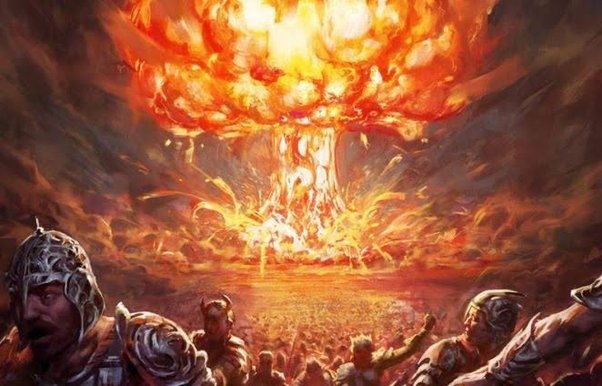
Well: sacred text in hand, the two went to India to identify this eastern Sodom.
Davenport and Vincenti believe, for linguistic-geographical reasons that it would take too long to explain, that they have identified the ancient Lanka ("island") in the city of Mohenjo - Daro, center of the "civilization of Harappa", which flourished (and suddenly became extinct) around to 2000 B.C.
Mohenjo-Daro, modern name (means "place of death") was called "Island" (Lanka) a few centuries ago, because it was surrounded by a secondary branch of the Indus River, now dried up. The archaeological excavations, conducted above all by the British, about thirty years ago, have brought to light a mysterious and shocking reality.
"The last inhabitants of Mohenjo-Daro died a sudden and violent death"
wrote archaeologist Sir Mortimer Wheeler.
In the rubble of the city 43 skeletons were found evidently the bulk of the population had had time to evacuate: these are people caught by an instantaneous death while attending to their chores. A small family made up of a father, mother and a child was found on a street, crushed to the ground while walking calmly.
"These are not regular burials"
wrote archaeologist John Marshall,
"but likely the result of a tragedy whose exact nature will never be known."
An incursion of enemies is excluded, because the bodies show no stab wounds. In return, as the Indian anthropologist Guha wrote,
"signs of calcination are found on some of the skeletons. It is difficult to explain this calcination..."
Especially since the calcined skeletons seem better preserved than the others.
It's a mystery why Davenport and Vincenti ventured an explanation, which they detailed in a book they wrote together: 2,000 B.C.: atomic destruction.
"Ancient Lanka was swept away"
they argue
"by an explosion comparable to a nuclear explosion".
The evidence?
"We clearly identified the epicenter of the explosion on site,"
explains Davenport.
"It is an area covered by blackened debris, remains of clay artifacts. We had some of this debris examined at the Institute of Mineralogy of the University of Rome: it turns out that the clay was subjected to a very high temperature, more than 1,500 degrees, for a few fractions of a second. There was a beginning of fusion which was immediately interrupted. It is excluded that a normal fire or the heat of a furnace can produce this effect.Furthermore, the houses of the ancient city were damaged with much less seriousness, the farther they are from the epicenter. Near the blast, the buildings (brick, with wooden upper floors that were completely destroyed) were razed to the ground. A little further away, there are walls one and a half meters high; in the furthest points of the city the remaining walls exceed three meters".
It is the unmistakable effect of an explosion that took place a few meters from the ground.
"The hypothesis that the disaster was caused by a nuclear-type explosion"
says Ettore Vincenti
"is strengthened by a legend that we gathered from a local inhabitant. He told us that "the lords of the sky", angry with the inhabitants of the ancient kingdom where now there is the desert, they annihilated the city with a light that shone like a thousand suns and sent the roar of ten thousand thunders. Since then anyone who dares to venture into the destroyed places is attacked by spirits villains that make him die".
David Davenport and Ettore Vincenti do not hide the fact that their hypothesis appears completely improbable.
"It is hard to believe"
they say
"that a civilization of four thousand years ago, capable of building missiles, 'flying machines' and atomic bombs, has disappeared without leaving a trace. A technological civilization would also be an industrial civilization: therefore a civilization that leaves mountains of rubbish and scrap. Even in four thousand years the remains of our current technological culture should be visible: if only for the large amount of rubble, concrete ruins, rubbish of various kinds. None of that can be found in the city of Mohenjo-Daro: which was a prosperous and advanced city, with rationally arranged wells and an advanced sewage system, but certainly not inserted in a technological system comparable to ours. The few weapons found are spears and swords, certainly not rifles and pistols".
So?
"The extraterrestrial hypothesis imposes itself"
says Vincenti
"The 'lords of heaven' who destroyed ancient Lanka were perhaps beings who had come from 'elsewhere'. Space colonizers who behaved like all colonizers: with brutality and arrogance. Perhaps, attacked by the inhabitants of Mohenjo-Daro, they wanted inflict an exemplary punishment on them. To the sound of atomic bombs".










